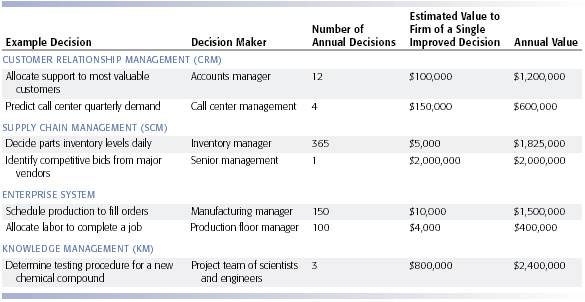Casino Demographics

- Online Casino Demographics
- Social Casino Demographics
- Las Vegas Casino Demographics
- Casino Player Demographics
- Casino Player Demographics
- A record 49 percent of American adults have a favorable view of the casino gaming industry, up four percentage points from 2018, according to a national survey commissioned by the American Gaming Association.
- Online vs Land-Based While online casinos turned into a multi-billion dollar industry over the past decade or so, people still regularly visit land-based casino houses. Stats show that people who gamble online are on average a bit younger (45.7) compared to the brick-and-mortar casino visitors (51.2).
- National gambling statistics. The following reports are available for download: 2019. National Gambling Statistics, Financial Year ending 31 March 2019 - Audited.
- In addition, the team looked at ways that demographics could provide casino owners with valuable marketing insights. The data suggested, for example, that women devote more of their spending to slot machines than to table games like blackjack, and that men have a higher level of skill at the gaming tables than women.

Forty-five percent of casino players are men, 55 percent are women. Gamblers coming to the casinos during the next decade, however, may be different. Gaming industry leaders have discovered a new trend. They believe casino patrons of the future will have a higher level of college education, and be younger and more carefree.

When you are a small business owner, answering the question of what are important customer demographics can make or break your marketing efforts.
Customer Demographics are defined by Wikipedia as including “gender, race, age, income, disabilities, mobility (in terms of travel time to work or number of vehicles available), educational attainment, home ownership, employment status, and even location.”
These types of classifications can help us to target the right kind of marketing to the customers we are trying to attract.
Top customer demographic categories to look for:
|
|
Demographic Resources
- Census Bureau data – free to use and a wealth of demographic information.
- Bureau of Labor Statistics Demographic categories used by the BLS include sex, age, race and ethnic origin.
- Social Security Fact Sheet – Misc high level data about African Americans, American Indians, Hispanics, Asians, Women and Young People.
- Tax Records – Tax records can generally be found by searching “tax assessor's office” for the county that you are are researching. This data is a goldmine for length of residency, mortgage information, tax exemptions and deferrals.
Related Content :: Customer Demographics – Age Ranges, Generational Names and Numbers
Want More Customer Demographics?
- Customer Demographics – Age Demographics for Advertising
How To Use Consumer Demographics In Consumer Behaviour
Years ago marketers used demographic data to target broad swaths of their market when looking for potential customers. Maybe they were targeting a particular subdivision for a direct mail piece or found out all the people who had registered for a small business license to sell their business services.
Now we can use the demographics tools within sites like Facebook to laser target our marketing to specific demographics including the ones above PLUS recent marriage engagements, life events like graduating college, new teen drivers or even “Empty Nesters” who may have additional time or financial resources available!
Here is a super good post that has practial examples of how to use Facebook targeting, 5 Ridiculously Powerful Facebook Ad Targeting Strategies
Additional Customer Demographic Resources:
Customer Demographics – Age Ranges, Generational Names and Numbers. Really good post breaking down generational demographic data.
Customer Demographics Versus The Perfect Customer Profile If you are trying to figure out your “Customer Avatar” by using demographic data, this is a great post to show the difference between demographic data and finding your perfect customer.
Small Business Customer Demographics A more general overview of Customer Demographics, this one will help you to laser focus on the customers you should be targeting.
She-Conomy Awesome compilation of statistics about marketing to women!
Examples small business demographics market segmentation:
All this customer demographic data is great but if you don't know to use and implement it in the real world, it is not actually all that helpful!
Here are a few examples of how you can use demographics in practice for your marketing efforts. Help for understanding the demographics…
Hairdresser and Salon Customer Demographics
Online Casino Demographics
If you are selling haircuts, you could have a number of different types of clients. You could cater to young, african american males who are looking for edgy cuts OR you could target middle aged women who need a cut and color every six weeks or so. BELIEVE ME, the marketing to attract these two groups are going to be VERY different and trying to hit both of them would be impossible. For both the younger crowd and the ladies, Facebook is a good answer. You will want to target people in your geographic location (another demographic).
Financial Services Customer Demographics
This is a little easier. While everyone can afford a haircut, financial services people need to target consumers and business owners who are in a higher income range and who are interested in increasing their wealth. This customer will generally be older than 40, have a higher level of education and are probably currently employed. You can start relationships on Facebook, but you will grow a level of trust more easily with an email newsletters or videos of your service offerings.
Real Estate Customer Demographics
I have to say, as an industry I think that some Realtors are a little bit more focused on customer demographics than other small business owners are. OBVIOUSLY a first time homebuyer couple in their early 20's or 30's will need to have a different marketing message than empty nesters looking for a second home. While most Realtors will work with anyone who will fog a mirror, I KNOW that they would be more successful if they at least had different campaigns for the different target groups they serve.
I could go on and on, but hopefully you can start to get an idea of how to pick some demographics that could represent your ideal customer.
NOW, choosing your target customer demographics can seem like profiling rather than simply targeting demographics. While profiling is hurtful and unfair, demographics are used so that you can get your message out to a group of people who will be receptive to hearing your message. It will also allow you to save marketing dollars, as you will not be spending money with ads in places where your ideal customer does not frequent.
Fun exercise – One thing I have heard people do is to pick your important customer demographics and then make up a person who matches them. You could find a stock photo of someone who epitomizes your marketing criteria and then name him or her. That way, instead of trying to imagine what a made up person thinks or would buy, you can “sell” to someone you get to know!
Going to a casino means more than just putting cash into a slot machine or playing some table games. The modern casino has high quality restaurants, fun nightclubs, and even concerts for people to enjoy. This gives the casino demographics an interesting twist that other industries don’t usually have.
The demographic profile of a casino visitor is very similar to the profile of the average American in the US population.

Social Casino Demographics
It is a misconception to say that the poorest households typically visit casinos the most. Although this may be true in from a localized standpoint at some casinos, the average household income of a casino visitor is above $35k, but below $100k per year.
Here Is The Typical Casino Visitor
Las Vegas Casino Demographics

- 78% of casino visitors who go to gamble are generally optimistic about their personal financial situation.
- 57% of gambling casino visitors have saved more money this year when compared to the year before. Only 44% of non-gambling casino visitors can say the same thing.
- 1 in 5 casino gamblers say that they are approached for their opinion about how people should invest their money.
- 37% of all casino visitors say that they speak to friends or relatives when they have questions about financial matters.
- 3 out of 4 gamblers who have not yet retired have plans in place to set aside enough money to meet their retirement goals. 2 out of 5 non-gamblers don’t have any retirement plans in place.
- Men are slightly more likely to find themselves visiting a casino when compared to women.
- If gamblers do find themselves with an income of less than $35k, then they are more likely to have a gambling addiction when compared to other income groups.
Is the sub-20% of people who are living in poverty in the US going to outspend those not in poverty at a casino? Very doubtful. Someone with $100k in income can spend 3x more gambling and still be reasonably secure financially. The problem is that when people who are poor gamble, they are gambling a larger percentage of their income on a game instead of things they may need. This is why the perception exists that gambling hurts the poor the most. Yet despite this, non-gambling revenues exceed gambling revenues in Las Vegas.
How Connected Are Casino Visitors?
- 51% of gamblers who visit a casino say that they stay in-touch with people through email on a regular basis.
- Gamblers [78%] are more likely than non-gamblers [72%] to be homeowners.
- More than 50 million people visit a casino in the average year. Each person makes an average of 7 trips per year, with many using electronic games as their primary source of entertainment.
- People in the 36-50 age demographic are more likely to play slot machine games than any other age demographic. They’re also the most likely to be married and enjoy playing bingo-style games.
- Younger gamblers prefer to play traditional or electronic versions of blackjack.
- People who go to a casino to play craps are the most likely to also gamble online.
Just because electronics and the internet make gambling easier than ever to accomplish, this doesn’t mean that people are actually taking advantage of these mediums. Although casinos are seeing a rise in younger players embracing slot-style machines with electronic versions of roulette, craps, and blackjack available, there is still a preference for table games – especially for players who enjoy poker. Casino visitors are connected, but they don’t necessarily use those connections to actually gamble.
Casino Player Demographics
The Values of Casino Visitors
- 58% of gamblers say that they view their work as a career. 51% of non-gamblers say that they view their work as just a job.
- Half of all casino visitors who gamble say that they view owning their own business as their ideal work situation.
- 44% of gamblers say that their definition of personal success includes being a good spouse and/or parent.
- Gamblers are less likely to place an emphasis on what God thinks of them when compared to non-gamblers in every demographic.
- Although both gamblers and non-gamblers [4% each] volunteer at equal rates, it is the gamblers who are more likely to donate money to social issues [33%] than non-gamblers [20%].
Values are something that is subjective to the individual. When it comes to the average casino visitor, the notion of not judging a book by its cover seems very applicable. Gamblers especially are full of surprises when it comes to the values that they hold. It isn’t the poor that are in desperate need for a meal, a bath, and fresh clothes that you’ll find at your average casino. The casino demographics show that someone just like you is who you’re going to find.
Related Posts:
Casino Player Demographics
Although millions of people visit Brandon's blog each month, his path to success was not easy. Go here to read his incredible story, 'From Disabled and $500k in Debt to a Pro Blogger with 5 Million Monthly Visitors.' If you want to send Brandon a quick message, then visit his contact page here.